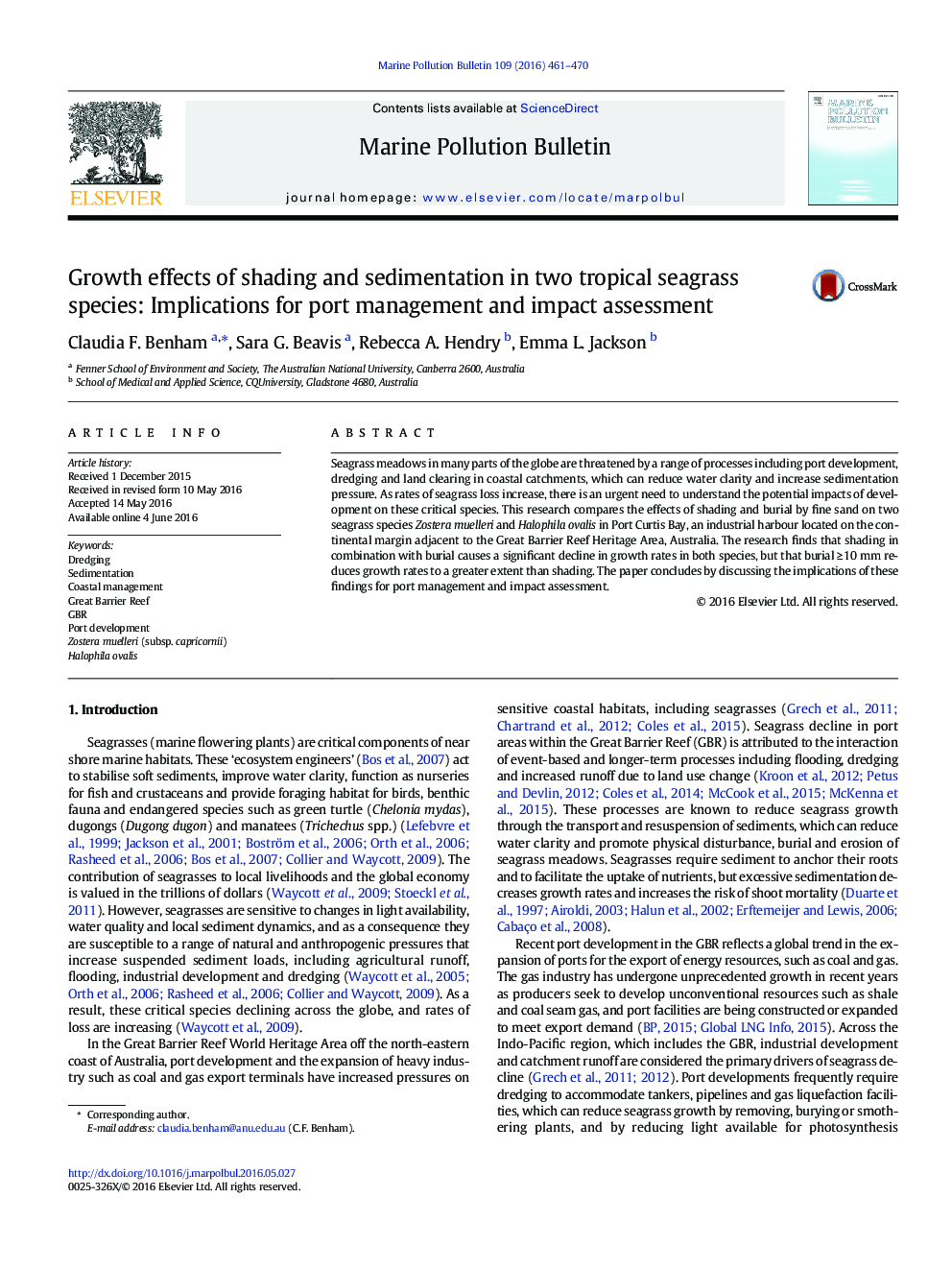| Article ID | Journal | Published Year | Pages | File Type |
|---|---|---|---|---|
| 4476424 | Marine Pollution Bulletin | 2016 | 10 Pages |
•Seagrasses in the GBR are sensitive to changes in sediment dynamics associated with port development and dredging.•This paper tests the effects of shading and burial on growth of the seagrasses Zostera muelleri and Halophila ovalis.•Shading in combination with burial causes a significant decline in growth rates in both species.•Burial ≥ 10mm reduces growth rates to a greater extent than shading.•The implications of these findings for port management and impact assessment are discussed.
Seagrass meadows in many parts of the globe are threatened by a range of processes including port development, dredging and land clearing in coastal catchments, which can reduce water clarity and increase sedimentation pressure. As rates of seagrass loss increase, there is an urgent need to understand the potential impacts of development on these critical species. This research compares the effects of shading and burial by fine sand on two seagrass species Zostera muelleri and Halophila ovalis in Port Curtis Bay, an industrial harbour located on the continental margin adjacent to the Great Barrier Reef Heritage Area, Australia. The research finds that shading in combination with burial causes a significant decline in growth rates in both species, but that burial ≥ 10 mm reduces growth rates to a greater extent than shading. The paper concludes by discussing the implications of these findings for port management and impact assessment.
